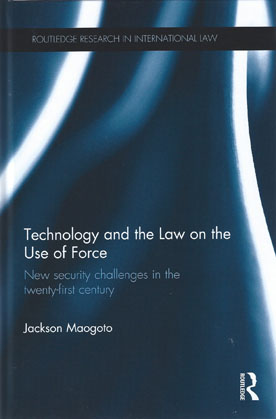We are now closed for the Christmas and New Year period, returning on Monday 5th January 2026. Orders placed during this time will be processed upon our return on 5th January.

In recent years military technology and strategy have developed apace particularly in regards to cyber and space warfare. In 2007 Estonia suffered a month long cyber assault to its digital infrastructure which it is presumed came from Russia in retaliation for the removal of a World War II-era statue of a Soviet soldier from its capital.
This was described as some as the first war in cyberspace-Web War I. Since then there have been several more cyber attacks on a State and its digital environment, in particular in Iran in 2010 when a worm Stuxnet was identified as having infected and damaged Iran's uranium enrichment plant presumably in an attempt to set back Iran's nuclear programme.
This book takes a detailed look at these new theatres of war and considers their relation to international law on the use of force. The use of force, except in cases of self-defence or with the authorisation of a Security Council Resolution, is prohibited under the UN charter and customary international law however, the law of jus ad bellum was developed in a pre-digital era where current technological capabilities could not be conceived of.
This book asks whether the law on the use of force is able to deal with legal disputes likely to arise from modern warfare. Among the questions it considers are: What amounts to an armed attack in an age of anti-satellite weaponry and lasers that can cripple satellites? Does the destruction of a State's vital digital eco-system or the "blinding" or jamming of military communication satellites constitute a threat? If so what is the threshold that would enliven the right of self-defence or retaliatory action?
The book argues that while technology has leapt ahead the legal framework has failed to adapt, and as a result the ability of States to legally defend themselves has been impaired.